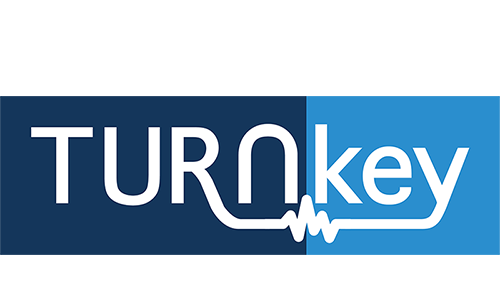
The overall objective of TURNkey is to contribute to earthquake risk reduction, by reducing future economic and social losses in Europe and mitigating the direct and indirect consequences of earthquakes.
The general objectives of TURNkey will be accomplished through the following objectives:
- To develop and test a new OEF and EEW systems (within the real-time cloud-based TURNkey platform able to integrate and process data during the risk management process) supporting RRE and search-and-rescue (SAR) operations, and to tangibly mitigate the impact of earthquakes on societies, buildings, and infrastructures as well as SAR teams (aftershock forecasting and early warning).
- To combine existing local/regional information and expert opinion with (1) to provide a robust decision-making framework, and its implementation tools, that allows stakeholders to better prepare for and respond to earthquake disasters.
- To identify the potential technical as well as sociological and socioeconomic barriers (financial, human, organisational and governance) to the implementation of the TURNkey platform, to develop guidelines to address each barrier, and to conduct cost-benefit analyses of the impact of OEF, EEW and RRE measures and compare them to conventional risk reduction measures, starting from the framework of six geographically-based European TBs, one mobile European TB, and one Worldwide TB.
- To develop training material to raise awareness amongst individuals and public/private organisations of the benefits of the TURNkey platform as well as train them in its use.
The general objectives of TURNkey will be accomplished through the following specific research and innovation Project Objectives (POs):
PO1: To develop and validate a robust multi-disciplinary (technical, social, economic) research framework that guides the development of EEW, OEF and RRE systems (PO3, PO4 and PO5) and demonstrates how the forecasting and warning systems will improve community resilience to earthquake events across Europe.
PO2: To deploy and improve available instruments for provisions of real-time seismic and geodetic data streams, and implement of monitoring and processing steps to be carried out in the six geographically- based, and two non-geographically-based, TBs of TURNkey. The objective will be to test the needs identified and solutions provided in PO1, PO3, PO4 and PO5. The TURNkey platform (PO6) will be implemented in each of the six physical TBs, tested, validated, and feedback provided to make improvements to the system.
PO3: To develop procedures to assess the expected/observed ground motions (ShakeMaps, forecasted and observed) before an earthquake (OEF), during the earthquake but before strong shaking arrives at assets at risk (EEW), and immediately after strong shaking (RRE). These procedures will be implemented within the TURNkey platform (PO6) and applied within the project’s TBs (PO2).
PO4: To develop procedures (automatic computer algorithms based on theoretical models and observed data) for the rapid prediction of losses immediately following an earthquake rupture, while accounting for field observations and structural monitoring to update the models. The procedures will generate updated damage and loss predictions by taking into account the procedures for generating theoretical and observation-based ShakeMaps (PO3). The development process will benefit from the TBs actions (PO2) in terms of the physical vulnerability of buildings, functional and systemic vulnerability of systems, monitoring of selected structures and population coverage.
PO5: To develop protocols for response, emergency management, and safety communication – including uncertainties (to technical stakeholders, nontechnical stakeholders, and the public). Based on the decisional rules from Decision Support Systems (DSSs), the goal here is to provide 1) rapid information to emergency decision-makers about the availability/unavailability of strategic buildings and access areas or the need for people to move to specific emergency areas; 2) rapid information to rescuers about time- dependent seismic risk (for instance, due to aftershocks). A final set of guidelines and protocols for safety communication and response will be prepared to facilitate the practical implementation of the DSSs.
PO6: To integrate the research, innovation and methodologies from the outputs of PO1, PO2, PO3, PO4 and PO5 for the development of the TURNkey multi-sensor unit and the cloud-based TURNkey FWCR platform, which will, for the first time, consolidate currently widely-dispersed tools within a ready-to- deploy system, which is also easily customizable, for a tangible real-time earthquake risk reduction. The sensors of the multi-sensor-based earthquake information system and TURNkey platform will provide multiple possibilities for applications within OEF and EEW as well as for RRE. The overall purpose of the sensors and platform is to serve the public, authorities and stakeholders as a new tangible, cost- effective and easy-applicable tool, which will lead to a significant reduction in uncertainties regarding seismic hazard and structural vulnerabilities.
PO7: To develop best-practice manuals and training materials that, based on stakeholder needs (PO1) and after trialling and improvement through the TB implementations, will be used as a “proof-of-concept” of the TURNkey multi-sensor units and TURNkey platform.
